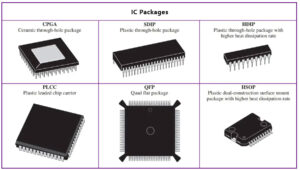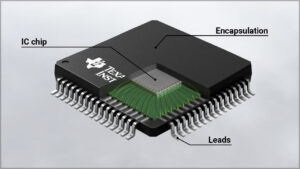Introduction
In the landscape of modern warfare, the role of technology is more pivotal than ever before. Among the countless innovations shaping the future of defense, one component stands out as the unsung hero: the semiconductor. These tiny yet powerful devices serve as the building blocks of modern electronics. These small chips enable a wide array of military applications that are indispensable for ensuring the effectiveness and efficiency of our defense capabilities.
In this blog post, we’ll explore how semiconductors are the silent force driving advancements in military technology, from guidance systems in missiles to communication networks on the modern warfare.
Follow us on Linkedin for everything around Semiconductors & AI
1. Powering Advanced Weapon Systems:
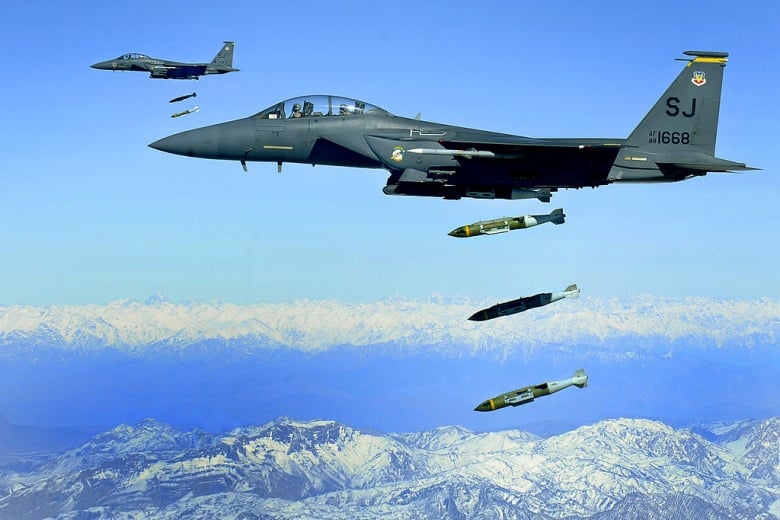
Guidance and Targeting: Semiconductors are the brains behind precision-guided missiles, smart bombs, and laser-designated weaponry. They control complex calculations for trajectory, target acquisition, and detonation.
The Joint Air-to-Surface Standoff Missile (JASSM) uses advanced semiconductors for its complex flight control system and intricate digital terrain mapping for precise target location.
Electronic Warfare (EW): Jamming enemy communications, radars, and navigation systems all rely on sophisticated semiconductor-based equipment for effective disruption of enemy operations.
AN/ALQ-184 Electronic Countermeasures (ECM) pod utilizes semiconductors for jamming enemy radar signals, disrupting their ability to track aircraft.
Active Defense Systems: Anti-missile defenses, counter-drone technology, and other active defense measures depend on high-speed signal processing and decision-making capabilities provided by semiconductors.
The Terminal High Altitude Area Defense (THAAD) anti-ballistic missile system relies on high-speed semiconductor processing to detect, track, and intercept incoming missiles.
Read more AMD vs Intel: Which CPU Reigns Supreme in 2024? – techovedas
2. Enabling Networked Warfare:
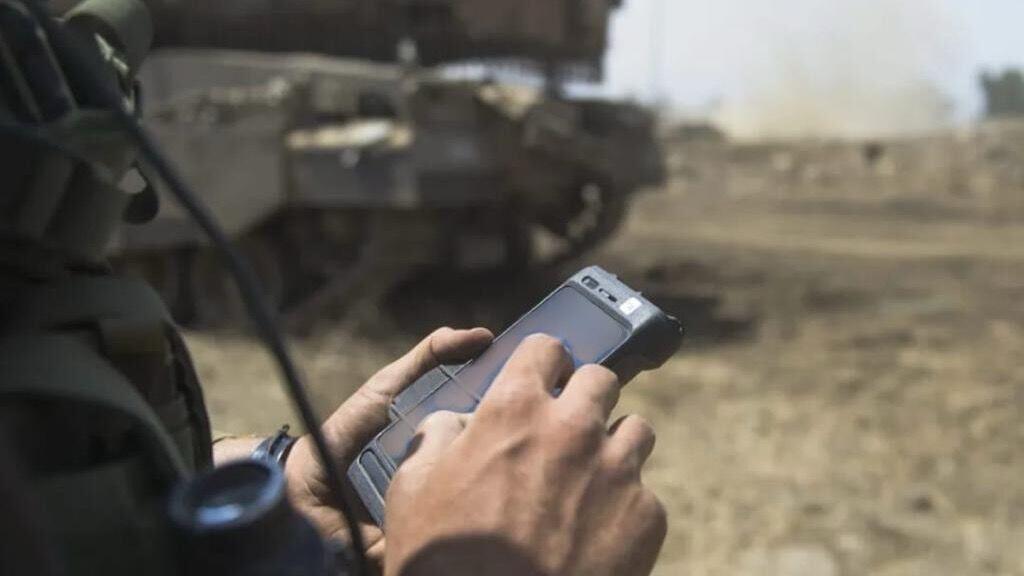
Secure Communication: Encrypted communication between troops, bases, and command centers relies on robust and secure communication networks that utilize semiconductors for data encryption, transmission, and decryption.
The Secure Mobile Anti-Jamming Repeater (SMART) system employs robust encryption algorithms running on semiconductors to ensure secure communication between troops on the battlefield.
Real-time Battlefield Awareness: Sharing information and maintaining situational awareness across vast distances is achieved through secure networks powered by semiconductors. This allows for coordinated and rapid responses.
The Link-16 data link utilizes semiconductors to facilitate real-time information sharing between aircraft, ground troops, and command centers, providing a shared tactical picture.
Cyberwarfare: Offensive and defensive cyberwarfare capabilities rely on powerful computers and specialized equipment, all of which are built with semiconductors.
Offensive cyberattacks might involve infiltrating enemy networks with specialized tools and software, all powered by advanced semiconductors.
Read More: Chinese Lithography Giant SMEE to File IPO with 28nm Capability
3. Enhancing Intelligence Gathering and Analysis:
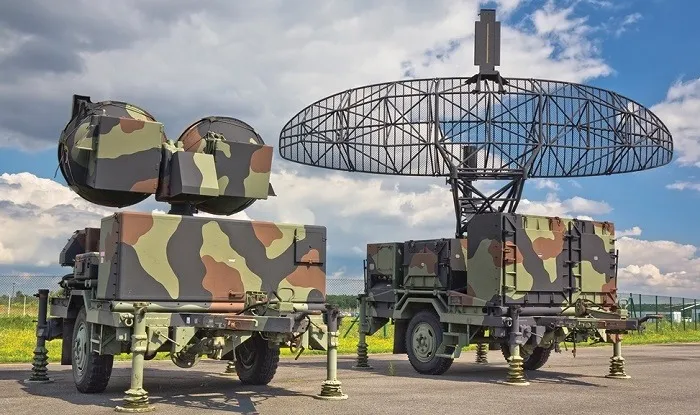
Sensor Technology: Modern warfare utilizes a vast array of sensors for surveillance, reconnaissance, and target identification. These sensors, from radar and LiDAR to infrared and night vision, all rely on semiconductors for functionality.
Advanced fighter jets like the F-35 utilize Active Electronically Scanned Array (AESA) radars with thousands of tiny semiconductor elements to create a detailed picture of the surrounding airspace.
Data Processing and Analysis: The massive amount of data collected from various sources needs to be processed, analyzed, and turned into actionable intelligence. This critical task is facilitated by high-performance computers powered by semiconductors.
High-powered supercomputers equipped with cutting-edge semiconductors are used to analyze vast amounts of satellite imagery and drone footage. This helps to provide valuable intelligence about enemy troop movements and positions.
Artificial Intelligence (AI) Integration: AI is increasingly used for battlefield analysis, threat detection, and even autonomous weapon systems. All these applications require the processing power provided by advanced semiconductors.
AI-powered battlefield analysis systems might use semiconductors to process sensor data and identify potential threats, aiding commanders in decision-making.
4. Ensuring Military Logistics and Supply Chains:
Precision Manufacturing: Modern military equipment is complex and requires high-precision manufacturing techniques. Semiconductor-based automation and robotics play a crucial role in efficient production.
Automated production lines for complex military equipment like fighter jets and tanks heavily rely on semiconductor-controlled robots for precise welding, assembly, and component placement.
Inventory Management and Distribution: Maintaining a well-stocked inventory and efficiently distributing supplies across vast areas rely on sophisticated logistics systems powered by semiconductors for data management and coordination.
Military logistics software powered by semiconductors tracks equipment, supplies, and ammunition across vast distances, ensuring they reach the front lines when needed.
Cybersecurity of Military Infrastructure: The increasing reliance on digital systems in logistics makes cybersecurity crucial. Semiconductor-based security measures protect critical military infrastructure from cyberattacks.
Firewalls and intrusion detection systems safeguarding military networks from cyberattacks utilize semiconductors for real-time monitoring and threat identification.
5. Vulnerability and National Security:
Supply Chain Dependence: Modern militaries are heavily dependent on a steady supply of semiconductors. Disruptions in the global supply chain can significantly impact a nation’s ability to maintain and deploy advanced weaponry.
Technological Innovation: Rapid advancements in semiconductor technology are constantly changing the landscape of warfare. Countries that prioritize research and development in this field gain a significant advantage.
Countries investing heavily in research and development of next-generation semiconductors might gain an edge in developing more advanced and effective weapon systems.
Emerging Applications: The future of warfare might see even greater integration of semiconductors into areas like directed-energy weapons, autonomous combat vehicles, and advanced communication networks.
Future warfare might see the deployment of directed-energy weapons like lasers. These would rely on high-powered semiconductors for efficient energy transfer and control.
Conclusion: Harnessing the Power of Semiconductors for National Defense
Semiconductors are the backbone of modern warfare, powering crucial military technologies. They enable precision-guided weaponry and seamless battlefield communication networks. Ongoing innovation in semiconductor technology promises even greater enhancements in military capabilities, ensuring technological superiority and national security.


